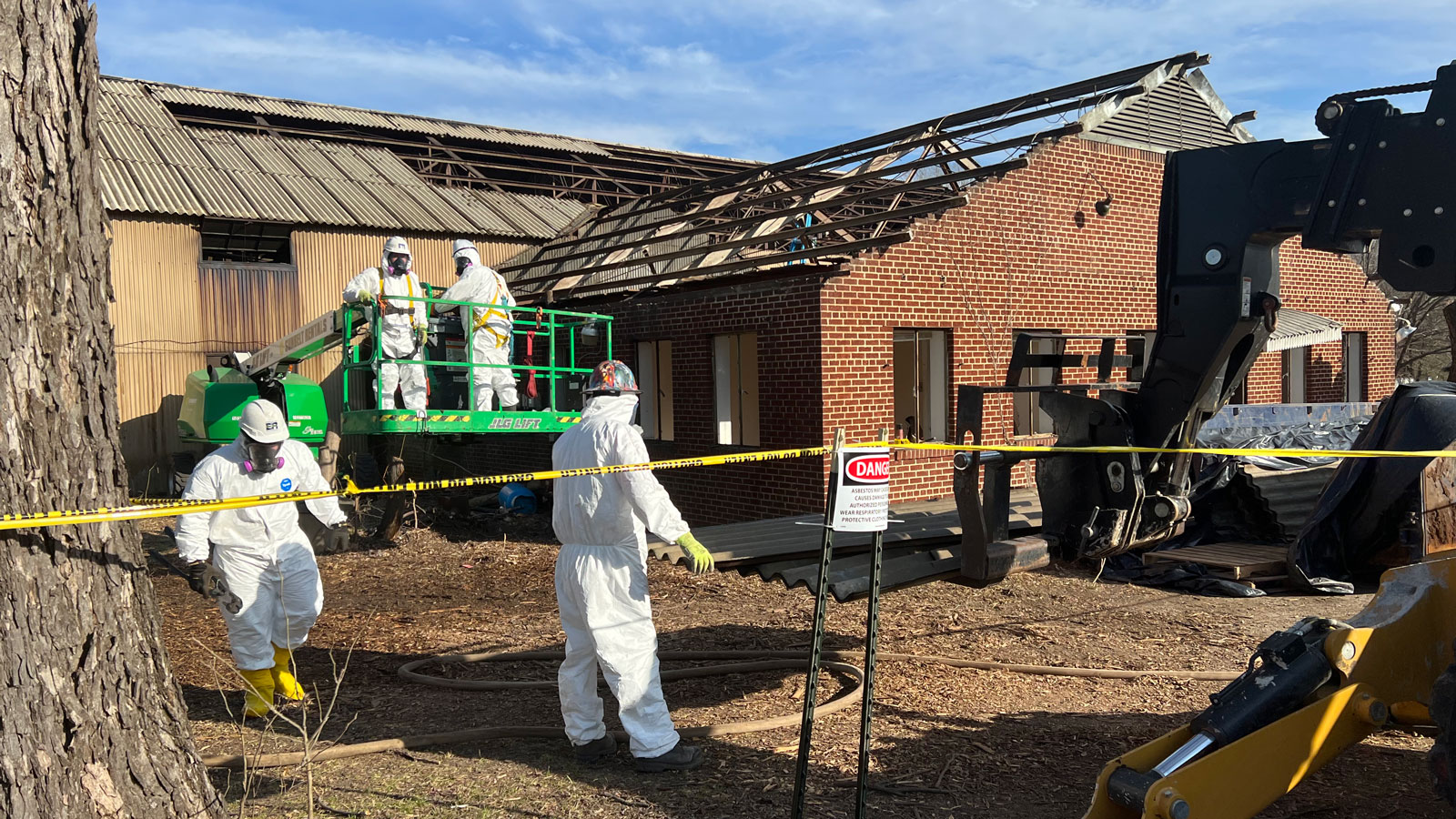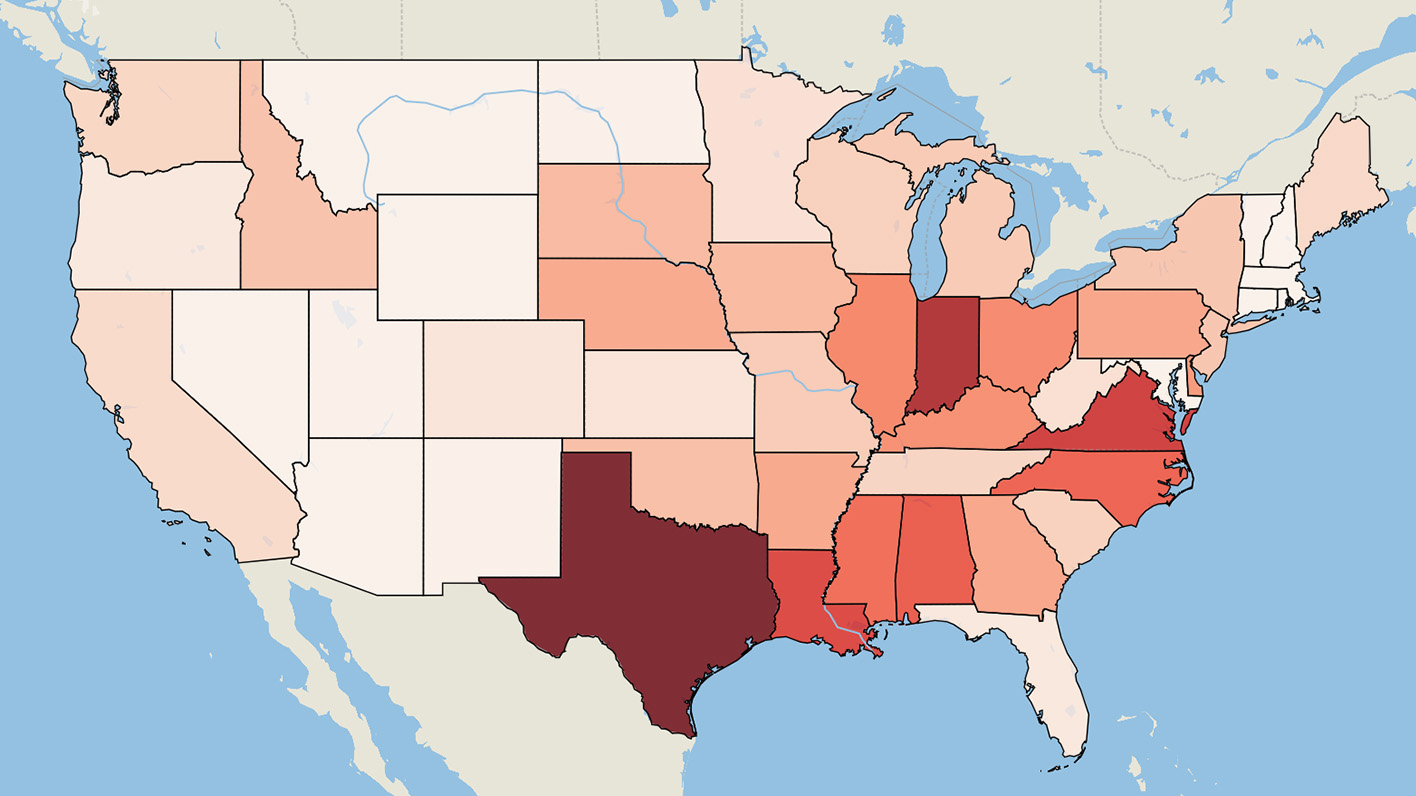
Testimony on HB0229: Prohibition of Child Care Products Containing Flame-Retardant Chemicals – TDCPP
Studies link chlorinated Tris to neurological damage, hormone disruption, mutagenicity and cancer, and it has the same chemical structure as banned chemicals like DDT, PCBs and Dioxin. Chlorinated Tris tested positive for mutagenicity in the 1970s and as a result it was voluntarily removed from children’s pajamas in 1977. Since the action was voluntary, companies can legally use it in other consumer products without informing government officials or the public.
Background: Since 1975, the California Bureau of Home Furnishings and Thermal Insulation Agency has mandated that the foam inside upholstered furniture be able to withstand exposure to a small flame, like a candle or cigarette lighter, for 12 seconds without igniting. This flammability standard, called Technical Bulletin 117 (TB 117) has become the driving force for non-essential applications of chemical flame retardants throughout the United States. Though it doesn’t mandate the use of flame retardant chemicals, in practice they are the cheapest way to meet the standard. Since California’s market for furniture is so large, it is impractical for manufacturers who sell nationally to not comply with the standard. As a result, about 80 percent of the home furniture and most of the upholstered office furniture sold in the United States has flame retardants in it.
One of these flame retardants is chlorinated Tris, also known as Tris (1, 3-dichloro-2-propyl) phosphate, or TDCPP. Studies link chlorinated Tris to neurological damage, hormone disruption, mutagenicity and cancer, and it has the same chemical structure as banned chemicals like DDT, PCBs and Dioxin. Chlorinated Tris tested positive for mutagenicity in the 1970s and as a result it was voluntarily removed from children’s pajamas in 1977. Since the action was voluntary, companies can legally use it in other consumer products without informing government officials or the public.
As a result, when the widely used flame retardant PBDEs were phased out of use in furniture and baby products with foam filling after 2004 because they were deemed too dangerous to human health, manufacturers turned to chlorinated Tris as a legal alternative, though less was known about its health effects. It is now one of the most popular flame retardants used in foam products. A 2011 peer-reviewed study in which Duke University tested children’s products for flame retardants found TDCPP in 33% of the items submitted from homes. A 2012 study found the chemical in 80% of newly purchased children’s products, and toxic flame retardants in 85% of the products.
Why should we be concerned?
The World Health Organization, National Cancer Institute, National Research Council and Consumer Product Safety Commission have all agreed that chlorinated Tris is a health hazard. Chlorinated Tris has been linked to mutagenicity and cancer, neurological damage, hormone disruption, and infertility. Chlorinated Tris is chemically bonded to the foam in furniture and can escape into the air over time. It can be inhaled, absorbed through the skin, or ingested when it attaches itself to dust particles that infants and toddlers are exposed to. In addition, during a fire, it causes furniture to release more carbon monoxide and soot in fires than products that don’t contain these chemicals.
The Consumer Product Safety Commission considers chlorinated Tris to be a probable human carcinogen and has said that adding it to furniture exposes children to a daily dose significantly higher than what the agency considers acceptable. Young children are most susceptible to the toxicity of flame retardant chemicals; they can ingest 10 times the amount adults do because they crawl around on the floor and put their hands and other objects into their mouths. At the same time, because children are still developing, a smaller amount of chlorinated Tris can be much more harmful to them than adults. In 2006, researchers at the U.S. Consumer Product Safety Commission cautioned that adding chlorinated Tris to furniture would expose children to nearly twice the daily dose deemed acceptable by the federal agency. The cancer risk for children during the first two years of life would be seven times higher than what most physicians, scientists and regulators consider acceptable, according to the safety commission’s report.
Carcinogen/Mutagenicity:
Laboratory studies have found that Tris causes kidney, liver, and testicular tumors, and a number of studies have found that Tris causes mutations, which are changes in DNA that can lead to cancer. Based on this evidence, the state of California designed Tris as a carcinogen under Proposition 65 in October of 2011.
Nervous System Effects:
Researchers have found that TDCPP can be toxic to the developing nervous system. A 2011 study tested the chemical’s effects on the development of brain cells and compared its effects to those of chlorpyrifos, a pesticide known to be toxic to the nervous system. By some measures, TDCPP was even more toxic to the cells than chlorpyrifos, with effects on cell development, number, and DNA synthesis.
Hormone Disruption:
A study published in 2010 found that men with greater exposure to TDCPP had lower levels of thyroid hormone and higher levels of prolactin, a hormone involved in a number of functions. The study evaluated exposure by determining the level of the flame retardant in house dust, and hormones were measured in blood serum.
Infertility:
One study published in March this year found that in men, higher blood levels of TDCPP and TCPP corresponded with decreasing sperm quality.
Increasing Toxicity of Fire:
Foam containing this chemical was shown to release high amounts of carbon monoxide and smoke during ignition, according to a 2000 study. “It’s hard to believe that the same chlorinated Tris flame retardant that our research helped remove from baby pajamas in 1977 is back in use in children’s products.” said Arlene Blum, PhD, a Visiting Scholar at the University of California, Berkeley Chemistry Department and Executive Director of the Green Science Policy Institute. “These children’s products do not pose a fire hazard and the Tris increases the toxicity of a fire if they were to burn.”
What are the fire safety benefits of using these chemicals in baby products?
Adding flame retardant chemicals to baby products has not been shown effective in saving life or property. California’s flammability standard TB117, has led to the use of flame retardants in furniture for more than thirty years. Despite this, an analysis of fire data from 1980 to 2005 by the National Fire Protection Association (NFPA), years when TB117 furniture was sold much more in California than in other states, does not show a greater reduction in the rate of fire deaths in California compared to that of other states without such a standard. This lack of overall performance of TB117 is not surprising considering that TB117 is a small open flame standard and does not provide protection from ignition by large flames. Once the cover fabric burns, the underlying foam is presented with flame challenge which is many times larger than the small flame which originally ignited the fabric.
On June 18th, 2012 Governor Jerry Brown of California asked the Bureau of Electronic and Appliance Repair, Home Furnishings and Thermal Insulation to reconsider the state’s standards for flammability. He directed revision of regulations involving flame retardants, specifically pointing to concerns related to upholstered furniture. The state’s bureau of Electronic and Appliance Repair, Home Furnishings and Thermal Insulation will update Technical Bulletin 117 “to reflect modern manufacturing methods that can lower the use of harmful chemicals.”
More effective fire safety strategies include decreased smoking, fire-safe cigarettes, fire-safe candles, and the increased use of sprinklers and smoke detectors. These can prevent fires without adding potentially hazardous chemicals to consumer products. Early data suggest that fire-safe cigarettes, now mandatory across the U.S., may have a much greater life-saving effect than the hundreds of millions of pounds of flame retardant chemicals added to consumer products.
In addition, while flame retardants may reduce the time for a material to ignite by a few seconds, they increase the carbon monoxide, toxic gases, and soot produced once the fire begins. Most fire deaths and most fire injuries result from inhalation of these gases and soot. When the flame retardants themselves eventually burn, they can produce highly toxic, bioaccumulative and persistent dioxins and furans. Firefighters have high levels of four kinds of cancers which have been associated with dioxin exposure and may be connected to the use of flame retardants.
What can we do?
The Maryland General Assembly should ban toxic Tris flame retardants in consumer products, particularly in children’s products. States were the first to take action on PBDEs, and can take swift action to address this new threat. In 2013, the state of Vermont banned TDCPP and New York banned TDCPP in early 2014, and a number of states will consider bans on Tris flame retardants in 2014. States can’t wait for Congress—they need to protect their residents from this immediate threat. At the same time, action at the state level will prompt Congress to act. States are proven laboratories for chemicals policy, showing what actions will succeed in protecting health and providing a model for federal action. State action also motivates industry to seek a federal solution, to avoid a patchwork of regulation across the country.
Maryland should also require companies to replace toxic chemicals with safer solutions.
To get off the toxic treadmill, companies need to find safer materials, processes, and chemicals to replace toxic chemicals in products. Without legal requirements, however, only the most health- and safety-conscious companies will take this kind of action. To level the playing field and avoid costly and unproductive substitutions, states should pass legislation requiring companies that use toxic chemicals to conduct thorough assessments and identify safer materials, processes, and chemicals. Eleven states are already working together, as part of the Interstate Chemicals Clearinghouse, to create a common understanding of how companies should assess chemical hazards and identify safer options.
Safer alternatives for flame retardants are available
Fire prevention is the first step in avoiding the unnecessary and excessive use of harmful flame retardant chemicals. Fire-safe cigarettes, sprinklers, and smoke detectors, along with the enforcement of improved building codes, are all proven to be effective in reducing fire-related deaths. Good product design can also reduce and eliminate the need for chemical flame retardants by using less flammable materials or by placing a physical barrier between the flammable component and outside materials. Finally, safer alternatives to chlorinated and brominated flame retardants that still meet applicable flammability standards have been identified. The EPA recently acknowledged that there is no evidence to substantiate claims that the use of certain flame retardants has resulted in a reduced incidence of fires.
Conclusion:
Maryland PIRG support HB 229, and requests a favorable report.
References:
Stapleton HM, Klosterhaus S, Keller A, Ferguson PL, van Bergen S, Cooper E, Webster TF, Blum A. 2011. Identification of flame retardants in polyurethane foam collected from baby products. Environmental Science and Technology, 45(12), 5323-5331
Slater, Dashka. “Arlene Blum’s Crusade Against Toxic Couches.” The New York Times. The New York Times, 09 Sept. 2012. Web. 14 Sept. 2012. http://www.nytimes.com/2012/09/09/magazine/arlene-blums-crusade-against- household-toxins.html?pagewanted=all>.
Stapleton HM, Klosterhaus S, Keller A, Ferguson PL, van Bergen S, Cooper E, Webster TF, Blum A. 2011 Identification of flame retardants in polyurethane foam collected from baby products. Environmental Science and
Technology, 45(12), 5323-5331
“NYS Assembly Votes Unanimously to Ban Chlorinated Tris.” Clean and Healthy New York. Web. 21 July 2012. “>http://www.cleanhealthyny.org/2012/03/assembly-tris-vote.html>.
“Flame Retardants: Tris (Chlorophyl) Phosphate and Tris (2- Chloroethel) Phosphate.” (1998). World Health Organization. Web. “>http://www.who.int/ipcs/publications/ehc/who_ehc_209.pdf>.
RE, Daley, SD Shaw, LS Birnbaum, and A. Blum. It’s All about Penta: Informing Decision Makers About the Properties of Penta BDE and Its Replacements. Tech. Green Science Policy Institute, n.d. Web. 27 Sept. 2012. ttp://“>http://www.nrdc.org/health/files/flameretardantsFS.pdf>.
Roe, Sam, and Patricia Callahan. “Distorting Science.” Chicago Tribune. 9 May 2012. Web. 21 July 2012. “>http://www.chicagotribune.com/news/watchdog/flames/ct-met-flames-science….
Stapleton, Heather M. “Tris (1,3-dichloro-isopropyl) Phosphate, a PentaBDE Replacement: Detection in Consumer Products, Human Metabolism, and Neurodevelopmental Effects.” Nicholas School of the Environment,vDuke University, Durham, NC 27708 USA. Web. “>http://www.bfr2010.com/abstract-download/2010/90033.pdf>
Schreder, Erika. Washington Toxics Coalition/Safer States. Hidden Hazards in the Nursery. 2012. Print.
“Chemical Culprits: PBDEs and Other Flame Retardants.” Natural Resources Defense Council, 5 Nov. 2011. Web. 21 July 2012. “>http://www.nrdc.org/living/healthreports/pbdes-and-other-flame-retardant….
Jayakody, Chandrasiri. “Fire -Retardant Characteristics of Water-Blown Molded Flexible Polyurethane Foam Materials.” Journal of Fire Sciences, November/December 2000. 18: 430-455.
Flynn, Mary. “Flame Retardants May Affect Kids’ Health.” Healthycal.org. N.p., 20 June 2012. Web. 19 Sept. 2012. “>http://www.healthycal.org/archives/9072>.
Topics
Find Out More


Superfund Back on Track

The Threat of “Forever Chemicals”

